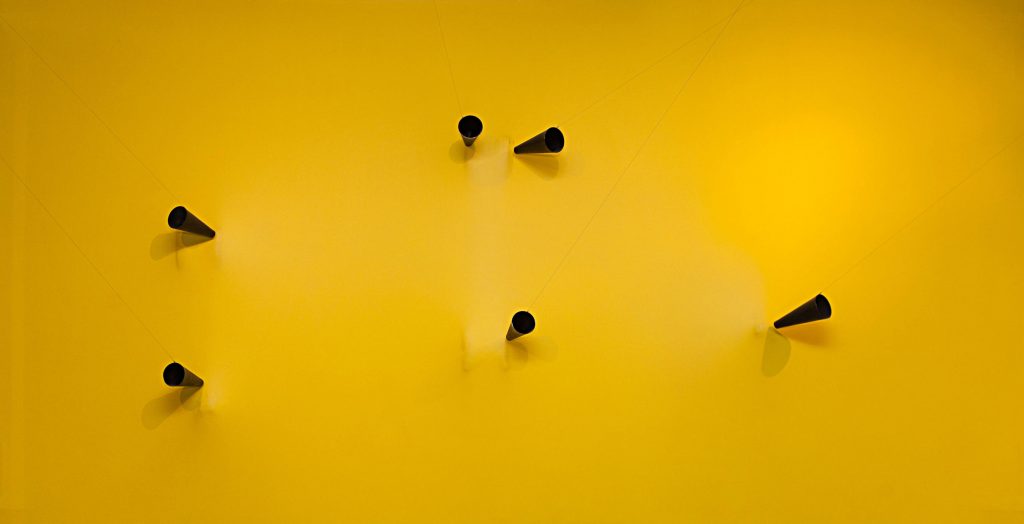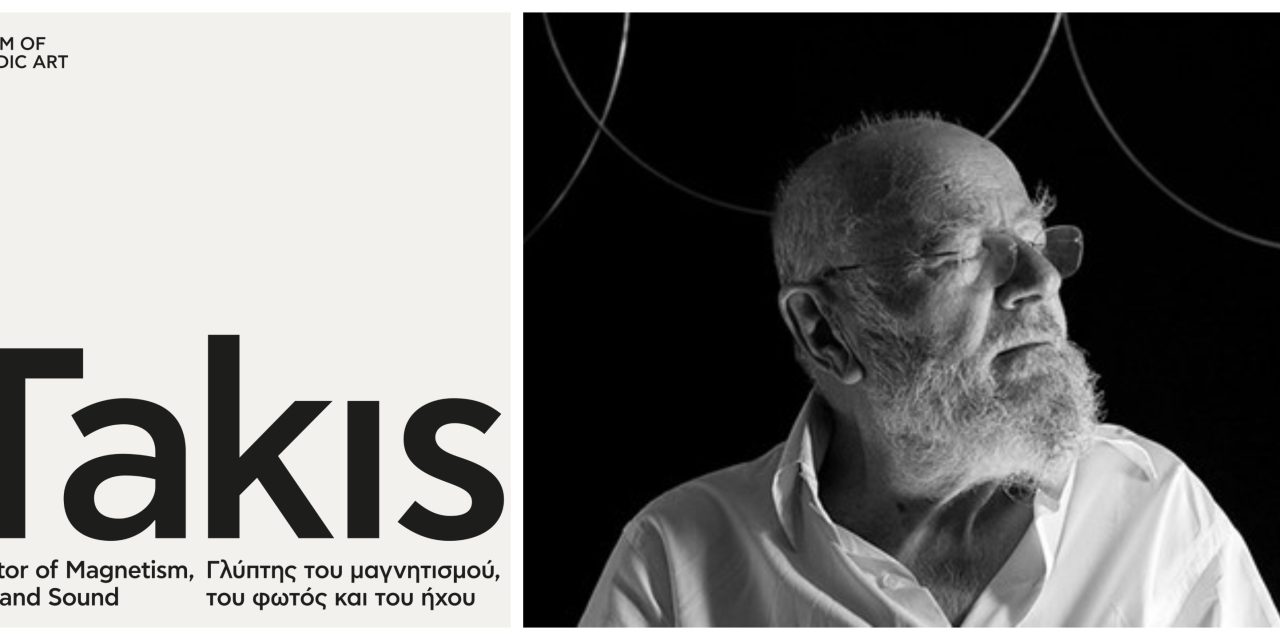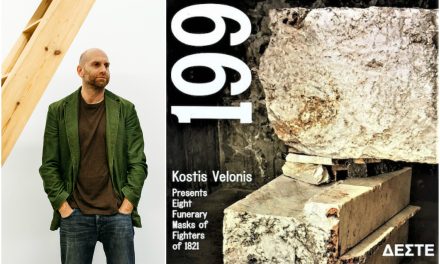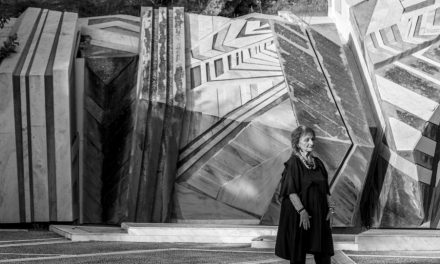The art exhibition “TAKIS: Sculptor of Magnetism, Light, and Sound”, the last show conceived with the artist’s involvement, traveled from the Tate Modern in London to the MACBA in Barcelona (2019) and was to complete its journey at the Museum of Cycladic Art in Athens (May 20 to October 25, 2020). Exhibiting Takis’ work at the Museum of Cycladic Art was of particular importance, as the artist considered the Ancient sculptures, particularly Cycladic figurines, a recurring source of inspiration. Unfortunately, the recent unprecedented circumstances -related to the Covid-19 pandemic- led to the cancellation of the show.
However, the exhibition catalog material could not have been overlooked as it illuminates an artist whose influence in post-war Europe proved to be a catalyst. Thus, the Museum created a new microsite, specially dedicated to TAKIS (available online until December 5, 2020) which presents three thematic essays on the artist’s work and practice, as well as his discussion with author-critic Maїten Bouisset, guiding readers through the key themes of Takis’s oeuvre: magnetism and metal; light and darkness; sound and silence. Moreover, rich photographic material offers online visitors the opportunity to browse digitally the exhibition works, as well as historical photographs spanning through the artist’s career – material that the Museum of Cycladic Art has been exceptionally granted permission to make available online with free access, due to the current circumstances and despite usual copyright rules.
Over a 70-year career in Athens, Paris, London, and New York, the Greek sculptor Panayiotis Vassilakis, widely known as TAKIS (1925–2019) created some of the most powerful and innovative artworks of the 20th century. A self-taught artist by conviction, he managed to create an inextricable link between Art and Science by combining elements of nature and physics in his sculpturing. His artistic path started in his late 20s despite having experienced a rough childhood and adolescence marked by hunger and imprisonment during the German occupation and despite the fact that his family did not accept his inclination towards the Arts. In 1952, he created his first atelier with his childhood friends and artists, Minos Argyrakis and Raimondos, in the area of Anakassa, Athens. Takis’ early sculptures were busts from plaster and sculptures from wrought iron inspired by ancient Greek culture as well as artists such as Picasso and Giacometti. Shortly after (in 1954), the artist decided to settle in Paris where he met and hanged out with American writers of the Beat generation.
 There are two milestone moments in Takis’ work; the first happens around 1955 after a trip from London; while waiting for the train he became inspired by the flashing lights, antennas, and aerials that scattered the terminal; thereafter, he started to make “Signals”, a series of sculptures developed over the next five decades that would include motors, bulbs, and fireworks, which became his most iconic type of work. The second key moment happened around three years later when the artist discovered magnetism as a way for sculpting. The first of his “Magnetic Walls” were made in 1958: a series of monochrome paintings in front of which hung cone-shaped or cylindrical steel objects from invisible thread. A magnet hidden behind the canvas would propel these mobiles towards the painted surface. Through magnetism, Takis was looking for a way to break the conventions of what a sculpture could be; instead of a solid heavy form, he tried to create a kind of sculpture that floats in space defying gravity.
There are two milestone moments in Takis’ work; the first happens around 1955 after a trip from London; while waiting for the train he became inspired by the flashing lights, antennas, and aerials that scattered the terminal; thereafter, he started to make “Signals”, a series of sculptures developed over the next five decades that would include motors, bulbs, and fireworks, which became his most iconic type of work. The second key moment happened around three years later when the artist discovered magnetism as a way for sculpting. The first of his “Magnetic Walls” were made in 1958: a series of monochrome paintings in front of which hung cone-shaped or cylindrical steel objects from invisible thread. A magnet hidden behind the canvas would propel these mobiles towards the painted surface. Through magnetism, Takis was looking for a way to break the conventions of what a sculpture could be; instead of a solid heavy form, he tried to create a kind of sculpture that floats in space defying gravity.
Thus, Takis managed to reinvent the nature of sculpture and stand out as a pioneer of kinetic art in the 1960s, since he was on the front line of technological experimentation or the so-called “interdisciplinary” approach to art. He continued to experiment with all environmental and natural elements that surround us; these elements would form the basis of his artistic quest throughout his long-standing career. More specifically, Takis has often said that energy -this vast and all-encompassing phenomenon- was the main subject of his work:
“I know how to use energy… and I want to spend my energy working on this”.
His works adorn the permanent collections of some of the world’s most admired Art Museums, such as the George Pompidou Centre for Contemporary Art in Paris, the MOMA and the Guggenheim Museum in New York, the De Menil Collection in Houston, the Tate Modern in London and the Peggy Guggenheim Collection in Venice. In France, the Jeu de Paume Arts Center, the Palais de Tokyo and the Fondation Maeght have organized large retrospective exhibitions dedicated to the artist. His work is also exhibited in the gardens of UNESCO as well as in La Defense, Paris. He also represented Greece in the Documenta exhibition in Kassel (1977), the Paris Biennial (1985), and the Venice Biennial (1995).
In 1986, the artist returned to Greece where he established the Research Center for Arts and the Sciences – known as the Takis Foundation– in Gerovouno hill, Athens. The Foundation was officially inaugurated in 1993, with the aim to promote knowledge and appreciation of the visual arts to the general public, as well as to provide services/facilities and support arts education programs. In 2001, the European Parliament awarded the Takis Foundation with an honorary plaque for the artist’s research in the field of renewable energy as exemplified by his “Electric Barrels” installation.
 More info: visit the TAKIS microsite (available until Dec 5, 2020) and the Takis Foundation official website
More info: visit the TAKIS microsite (available until Dec 5, 2020) and the Takis Foundation official website
E.S.
TAGS: ARTS | FESTIVALS | GLOBAL GREEKS | SCIENCE & TECHNOLOGY














